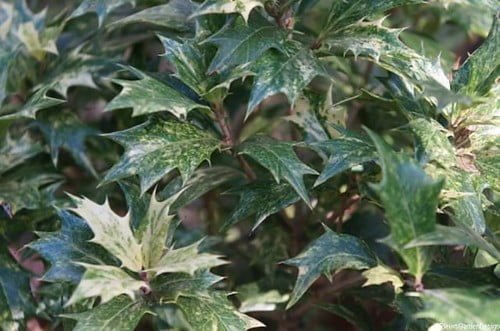Exploring the Characteristics of Tall Slim Pine Trees
If you've ever marveled at the graceful elegance of tall, slim pine trees, you're not alone. In this article, we'll delve into the fascinating characteristics that make these trees stand out in the natural world. From their towering height to their unique leaf structure and slender trunks, we'll explore how these trees adapt and grow in various environments. Join us as we uncover the important role that tall slim pine trees play in ecosystems and the environmental benefits they provide.
Height of Tall Slim Pine Trees
You may be wondering how tall tall slim pine trees can actually grow. Well, let me tell you, these majestic trees can reach impressive heights. On average, tall slim pine trees can grow to be around 80 to 100 feet tall, with some exceptional specimens reaching heights of up to 150 feet. Their slender trunks, covered in scaly bark, seem to reach towards the sky, their branches spreading out like open arms. As they grow, these trees display a remarkable combination of strength and grace, their towering presence providing shade and shelter to all who seek refuge beneath their canopy. It is truly a sight to behold, a testament to the wonders of nature's design.
Unique Leaf Structure of Pine Trees
Moving from the discussion of tall slim pine trees' impressive heights, let's now delve into the unique leaf structure that distinguishes these majestic trees. The leaves of pine trees, also known as needles, are long and slender, measuring about 1 to 11 inches in length. Unlike most broadleaf trees, pine trees have needles that remain on the tree year-round, providing a consistent green color even during the winter months. These needles are arranged in bundles or fascicles, with each bundle containing a specific number of needles depending on the species. The arrangement of needles in bundles helps to reduce water loss and increase efficiency in photosynthesis. The needles also have a waxy coating, which further aids in reducing water loss and protecting against extreme temperatures. Overall, the unique leaf structure of pine trees not only adds to their aesthetic appeal but also contributes to their ability to thrive in various environments.
Distinctive Slender Trunk of Pine Trees
To understand the characteristics of tall slim pine trees, let's explore the distinctive slender trunk that sets them apart. The slender trunk of a pine tree is a remarkable feature that contributes to its overall elegance and grace. Standing tall and straight, the trunk of a pine tree is often covered with rough, textured bark that provides protection against harsh weather conditions. This bark also helps to prevent water loss and insulates the tree's delicate inner layers. As you observe the trunk closely, you'll notice the presence of vertical ridges and furrows, giving it a unique pattern. These characteristics not only add to the visual appeal of the tree but also play a vital role in its ability to withstand strong winds and support the weight of its branches. The slender trunk of a pine tree is a testament to its resilience and adaptability, making it a true wonder of nature.
Adaptability of Tall Slim Pine Trees
With their slender trunks and resilient nature, tall slim pine trees adapt to various environmental conditions through their flexible branches and deep root systems. These trees possess the remarkable ability to bend and sway with the wind, allowing them to withstand strong gusts and storms. Their branches, which are thin and pliable, have the capacity to adjust to changing weather patterns, preventing breakage and damage. Additionally, their extensive root systems provide stability and nourishment, enabling them to thrive in different soil types and moisture levels. This adaptability allows tall slim pine trees to flourish in a wide range of climates, from the dry and arid regions to the cold and snowy landscapes. They are truly masters of adaptation, embodying the resilience and resourcefulness that serve as an inspiration to us all.
Growth Patterns of Pine Trees
How do tall slim pine trees grow and develop their unique characteristics? The growth patterns of pine trees are fascinating to observe. These majestic trees start as small seedlings, gradually developing into towering giants. As they grow, they exhibit a distinct upward growth pattern, reaching for the sky. The trunk of a pine tree grows straight and tall, with branches extending outward in a symmetrical fashion. The branches are covered with needle-like leaves that help the tree conserve water and withstand harsh weather conditions. As the tree matures, it forms a dense crown at the top, providing shade and shelter for smaller plants and animals. The growth patterns of pine trees exemplify their adaptability and resilience, making them a vital part of our natural environment.
Resilience to Harsh Weather Conditions
You can rely on tall slim pine trees to withstand and endure through harsh weather conditions with their remarkable resilience. These trees have adapted to thrive in various climatic conditions, making them a dependable source of shelter and protection. Their slender trunks and flexible branches allow them to sway gracefully in the face of strong winds, reducing the risk of breakage. The deep roots of tall slim pine trees anchor them firmly in the ground, providing stability during storms and preventing them from toppling over. Additionally, their needle-like leaves help reduce water loss and protect them from extreme temperatures. These unique characteristics enable tall slim pine trees to withstand the harshest weather conditions, ensuring their longevity and continued service in serving and protecting the environment.
Role of Tall Slim Pine Trees in Ecosystems
Tall slim pine trees play a crucial role in ecosystems by providing habitat and food sources for various species. These majestic trees tower above the surrounding vegetation, creating vertical space that is utilized by a variety of organisms. Their dense canopy provides shelter and nesting sites for birds, while their trunks offer hiding places for small mammals. The pine cones that adorn their branches contain seeds that are a vital food source for birds, squirrels, and other animals. Additionally, the fallen needles create a nutrient-rich layer on the forest floor, supporting the growth of understory plants and fungi. The presence of tall slim pine trees enhances biodiversity and contributes to the overall health and balance of ecosystems. Without them, many organisms would struggle to find suitable habitats and sustenance.
Types of Pine Trees With Slim Characteristics
Pine trees with slim characteristics continue to contribute to the biodiversity and health of ecosystems by providing habitat and sustenance for various species. These slender pines are commonly found in mountainous regions and are known for their tall, straight trunks and sparse branches. One example of a slim pine tree is the Rocky Mountain Bristlecone Pine (Pinus aristata), which can reach heights of up to 50 feet. Its slender form allows it to withstand harsh weather conditions, including strong winds and heavy snowfall. Another type is the Limber Pine (Pinus flexilis), which is known for its slim, flexible branches that can sway gracefully in the wind. These slim pine trees not only add beauty to the landscape but also provide valuable resources for wildlife, such as nesting sites and food sources.
Environmental Benefits of Tall Slim Pine Trees
Exploring the environmental benefits of tall slim pine trees reveals their significant contributions to ecosystem health. These majestic trees play a crucial role in serving the needs of our environment. Tall slim pine trees act as natural air filters, absorbing harmful pollutants and releasing clean oxygen into the atmosphere. Their dense foliage provides shade, reducing the need for artificial cooling and conserving energy. Additionally, these trees act as a natural barrier, protecting against soil erosion and maintaining the integrity of our landscapes. Their deep root systems help to stabilize the soil, preventing runoff and maintaining water quality. Tall slim pine trees also provide habitat and food for a variety of wildlife, promoting biodiversity and supporting the delicate balance of our ecosystems. Embracing the presence of these remarkable trees is essential in ensuring a sustainable and healthy environment for future generations.
Maintenance and Care for Tall Slim Pine Trees
To properly maintain and care for tall slim pine trees, you should regularly prune and inspect them for any signs of disease or damage. Pruning is essential to maintain the tree's shape and promote healthy growth. Start by removing any dead, broken, or diseased branches. Trim back any branches that are crossing or rubbing against each other. It's important to prune in the dormant season to minimize stress on the tree. Inspecting the tree regularly is crucial in identifying any signs of disease or pests. Look for discoloration, wilting, or unusual growth patterns. If you notice any issues, consult a professional arborist for proper diagnosis and treatment. Providing proper water and nutrient management is also important. Avoid overwatering and ensure the tree receives adequate sunlight. By following these maintenance and care practices, you can ensure the longevity and health of your tall slim pine trees.
Conclusion
Overall, tall slim pine trees possess unique characteristics that make them well-adapted to their environments. With their impressive height, distinctive leaf structure, and slender trunks, these trees play a crucial role in ecosystems. They demonstrate adaptability and exhibit specific growth patterns that contribute to their environmental benefits. Understanding the maintenance and care required for these trees is essential for their preservation. The exploration of the characteristics of tall slim pine trees provides valuable insights into their role and significance in the natural world.






